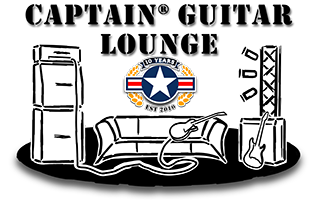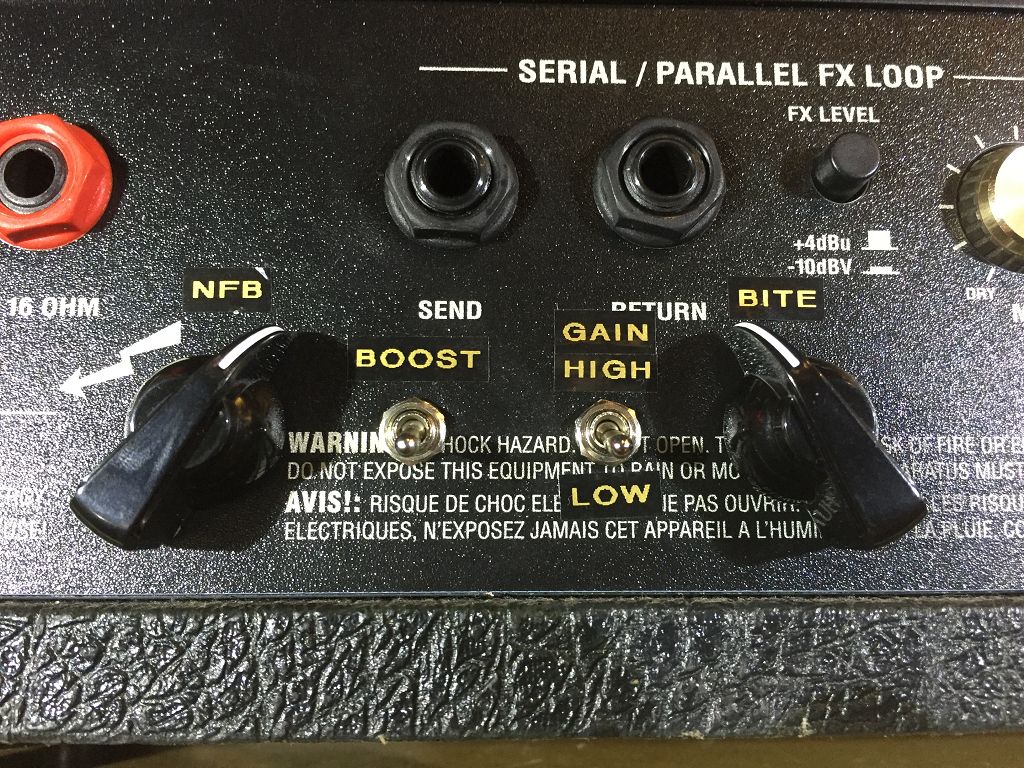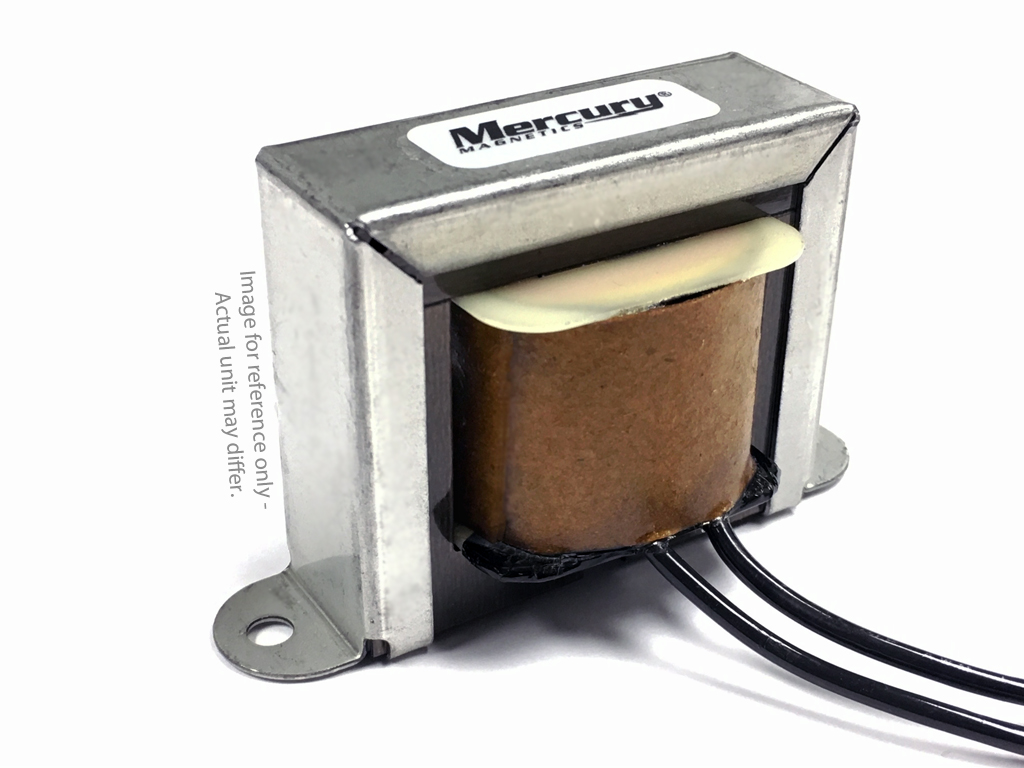
Captain Amp Mods
Marshall JVM410
But that also scares off many! Already the sight of 28 knobs & 8 push buttons in 2 rows on the front panel makes the vintage purist take distance from this monster. I admit, you will feel overwhelmed at first. But on the other hand: an old Super Lead, a 2203, together with a Silver Jubilee and a JTM45 in the home studio have just as many knobs and no one feels scared off by this – this is rather pure GAS! And everyone knows what to do. If you spend 2 minutes with the JVM you will see similarities. 5 controls per channel, per “amp”, actually quite simple! And all in one amp – great!
The guys from Marshall really put in the work at the JVM, no question about it. The amp is very well thought of, the functionality is great, hardly any amp offers so many features.
And since its launch nearly 15 years ago the model line has shown almost no structural failures. The amp runs reliably and rarely require repairs beyond a normal tube replacement.
But as always… as the owner of such an amp, you’ll notice some weak points after some time- Especially concerning the sound and handling.
Sure there is something to improve:
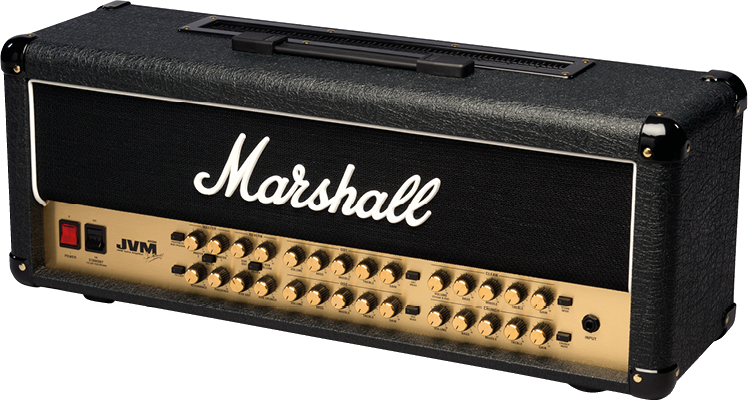
Weak points
Excess amount of gain in the overdrive channels! Besides the extreme background noise, the exaggerated gain structure is noticeable by unpleasant whistling and squealing.
The amps lacks dynamics and simply flattens every nuance while playing That’s why we developed the anti-gain mod in the first place.
The clean channel sounds pretty harsh when compared to the California clean sound. It could be more plesant.
The sound in the crunch channel is great, but unfortunately it doesn’t fill the gap between clean and overdrive. And since we like old Marshalls, there’s plenty of potential for improvement.
The OD1 and OD2 channels are identical, except for the mid frequency response. This makes the OD2 sound a bit more modern. A greater difference between the two channels would be desirable after all.
The differences in volume are often pretty large. To use the amp live you have to use both masters to match the channel volumes, which is not the real purpose of the two masters. Their main purpose is to have two different volumes to chose from, e.g. for a solo boost.
There is an overall lack of liveliness and responsiveness. The sound is good, but the feeling is missing! The old Marshalls were better at this!
The master controls have a poor adjustment range and controllability in the lower volume range is difficult. Two new potentiometers eliminate this flaw.
Modifications
.. for JVM410H top and JVM410C combo amplifiers Modifications for the JVM2xx series could be found here
To address these issues we have developed a modification catalog. And who wants to have the whole program is well served with the Captain Volle Hütte mod!
Additional information after the modification can be downloaded as a PDF – Note: The sheet is designed as a folder, so you always have the most important info in your pocket: JVM 410 Manual (german version)
We have put together all seven modifications for you as a package.
JVM 410 Captain Volle Hütte Mod package price: 497,- €
- Channel voicing
- vintage-style mod
- switchable clean/crunch green boost
- anti gain mods with gain switch and bite control
- controllable negative-feedback-mod
- choke mod
- master mod
JVM 410 Captains Favorite Mod package price: 397,- €
If all the extra knobs are too much for you, you can get all the modifications with our favorite pre selected sounds as well. Without the extra switches and knobs on the back panel.
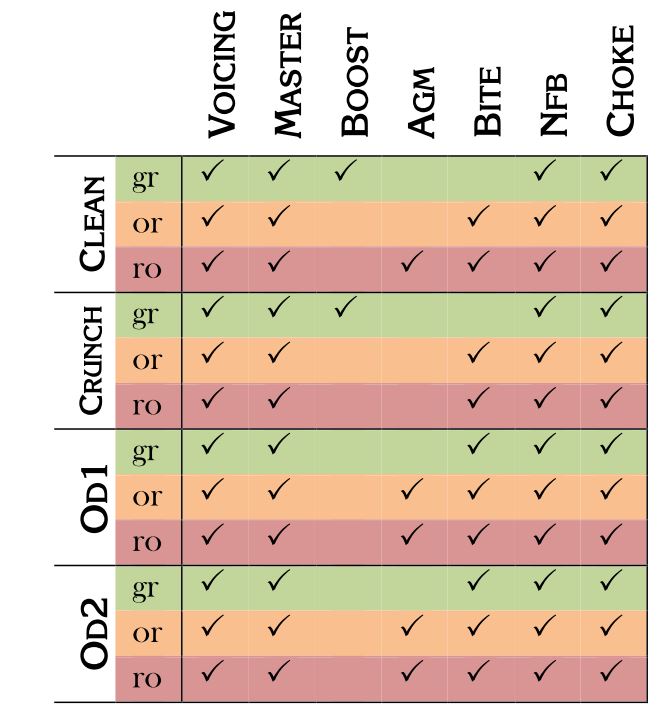
factory new Marshall JVM410H
already modded with Captain Volle Hütte
Order your brand new JVM410 already fully modified!
With about 200 amps alreay modded
new JVM410H with Captain Volle Hütte Mod
single modifications
- Channel voicing
- vintage-style mod
- clean green/crunch boost
- Anti-Gain-Mods
- Negative-Feedback-Mod
- choke mod
- master mod
- Extra: Elo-mod
Adjustment of the sound character of the individual channels. We wanted to refrain from comparisons to old models because there is a lot of shenanigans going on. Therefore, at this point a objective description:
- Clean: soft, round sound, without harsh treble.
- Crunch: more open and with extra gain and grid. It also adds depth and dimension to the channel. .
- OD1: New 80s hard rock channel. Not as modern as the OD’s usually are and with more bottom end. Reduced Gain in addition to the anti-gain-mod which effects more channels
- OD2: this is the stock OD1 channel. Just moved to a different location to make space for the new OD1 channel
price: 167,- €
This mod makes the amp feel more vintage. We add the vintage correct cathode follower curcuit. The amp feels more soft and creamy. The difference depends on the channel and the particular setting, but it is crucial for the overall sound of the amp, because the last scratchy highs disappear.
price: 37,- €
Try this: you play the clean channel in yellow and red modes with gain below 12 o’clock to stay realtively clean – when you switch to green mode, it drops a lot in volume. The boost switch adjusts the volume of the modes. Nice side effect: the crunch green is also increased in gain. This function can be deactivated by means of a switch on the rear panel.
price: 67,- €
The anti-gain mod was the first mod we’ve developed for the JVM410. And to us it is the most important.
The overdrive channels just have way too much gain and compression. This also leads to problems with backround noise.
There are three variations:
1) anti-gain-mod
We reduce the gain in Clean red and OD1/OD2 yellow and red. Clean red thus moves closer to the other modes of the channel.
In OD1/OD2, the gain also reduces the compression, the sound becomes more open/dynamic, and the noise floor is reduced
price: 97,- €
2) Anti-Gain Mod with Gain Switch
To the anti-gain mod there’s an additional switch on the rear panel to change the gain reduction in two levels.
Low ≙ about 25% of the original gain, High ≙ 50%.
price: 147,- €
3) Anti Gain Mod with Gain Switch and Bite Control
To adjust the “bite” of the distortion, especially in the crunch channel insanely effective and cool sounding! Adjustment range goes from rather scratchy stock sound to slightly creamy overdrive.
Hard to describe, definitely try it in the lounge! Additional bite-knob on the rear panel.
price: 207,- €
Negative feedback in the output stage of (almost) all tube amplifiers provides more stability and more linear frequency response. . The VOX AC30 shows that it is also possible without this feedback.30. The sound becomes rougher and more dynamic. You need that for classic rock and blues, it gives you that dynamic feel, the amp “breathes”. With the NFB control you can set your personal sweet spot between “evil” and rock’n’roll.
price: 77,- €
Actually, it’s a shame that Marshall doesn’t put a choke in the JVM’s from the factory. However, the further development according to Satriani’s ideas, the JVM410HJS, has been given one, thankfully. With a choke added the feel of the amp becomes more dynamic, the response time changes, the attack becomes more explosive. Just as we know it from the 100Watt JMP amps. The basic sound, the DNA, is not changed.
price: 107,- €
In the past we often got requests if we could equip the JVM with a Powersoak – apparently many people find it just too loud!
And that’s true: With Master set to 9 to 10 o’clock, it’s actually already too loud for the studio or even the basement music room.
And at really low settings it’s quite hard to set the right volume, because the potetiometers react almost instantly,
Between 0 and 5 you control 80% of the volume, everything above 5 changes the level only slightly. But you never get that far because your ears have already fallen off.
We correct that! With new potentiometers, the lower control range expands so that the normal 9 o’clock position is not reached until 12 o’clock – that means:
Better control at lower volumes! The maximum volume remains unchanged, of course.
And the controls work really well, the JVM sounds powerful and dynamic even at low volumes.
price: 47,- €
JVM ELO-mod
No, it is not about sound adjustment to the tastes of Phil Bates or Jeff Lynne – it’s about the emulated line-out of the JVM.
From the XLR jack on the amp, you can send a frequency-matched guitar signal directly to the mixer, recorder, or other devices.
The idea was to have an alternative to the more common method of running the amp into a cabinet and sending the sound to the mixing console via a microphone.
The ELO has an internal frequency adjustment which “emulates” a speaker, i.e. certain frequencies are amplified or attenuated, just as a speaker would do.
Two weak points became apparent during the ELO’s test:
- The signal is quite usable, but the excessive bass frequencies are unpleasantly noticeable when listening more closely. The signal quickly appears muddy, so that a lot of reworking on the console is necessary – if the track can be saved at all.
- The input to the elo curcuit is being fed from before the master volume controls Thus volume boosting the elo signal by switching the masters is not possible. In addition, the level of the ELO signal is quite high, some mixers are being overdriven quickly.
We gotta change that!
1) ELO-tone mod
bass reduction in the emulated line out signal. The signal becomes more transparent and is no longer muddy.
price: 37,-€
2) ELO-master mod
The ELO tap can be switched before or after the master controls (pre/post) by means of a toggle switch on the rear panel.
In Post position the output level depends on the active master control, in pre position the level is independent from the master controls.
price: 67,-€
3) ELO package
Tone and master mod with pre/post switch
price: 97,-€
The ELO-mod is NOT included in the packages and always has to be ordered separately!
Other modifications
JVM cosmetics
A visual highlight for your JVM, so the appearance follows the inner values. So the amp already has the rock’n’roll attitude when it just stands there!
. Original Marshall Checkerboard Grillcloth as on the amps from 1970 to 1974.
. Alternatively, the front is also available in Salt&Pepper (Basketweave) as on the Marshalls from 1968 to 1970.
Choice of Marshall logo and small Captain logo or large Captain logo in the center (in exchange).
TRANSFORMERS
Transformer overview only available in desktop view
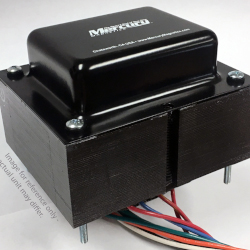
Mercury Magnetics MAR-JVM100-O Marshall JVM Output Transformer
384,00 €
Available on backorder

Mercury Magnetics MAR-JVM100-OS Marshall JVM Output Transformer
398,00 €
1 in stock (can be backordered)

Mercury Magnetics MAR-JVM100-P-E Marshall JVM Power Transformer
Universal Voltage Primary
445,00 €
1 in stock (can be backordered)
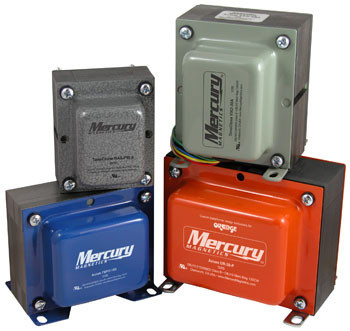
Einbau Transformatoren
Einbau von Transformatoren in einen Röhrenverstärker, inclusive Bias-Check und VDE Prüfung.
(evtl. notwendige Blecharbeiten gehen extra)
Pauschalpreise für einen, zwei oder mehr als zwei Transformatoren.
67,00 € – 127,00 €
Speaker mods
The contribution of the speakers to the sound of an amplifier is still underestimated.
Therefore here are our suggestions for the JVM combos. And of course for the cabinets that you connect to the tops.
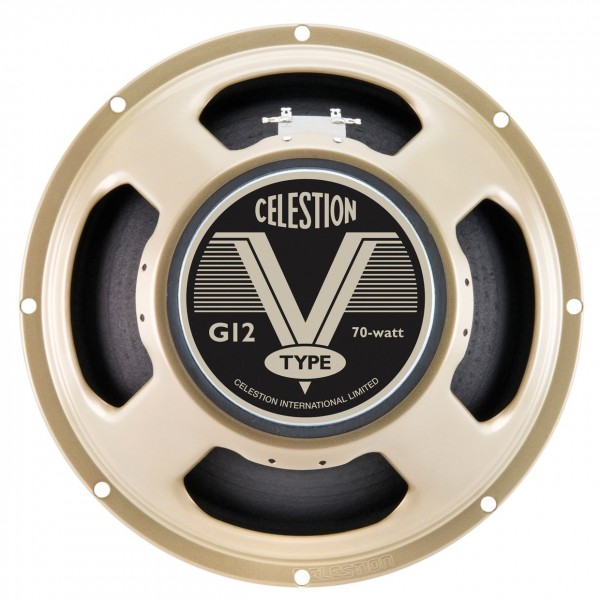
Celestion G12 V-Type
The icing on the cake for the combos of the series is the Celestion G12 V-Type speaker. Even more vintage flavor!
And a JVM410H with the Volle Hütte Mod becomes a vintage amp killer by pairing it with a 4×12″ with V-Types! Come by and check it out!
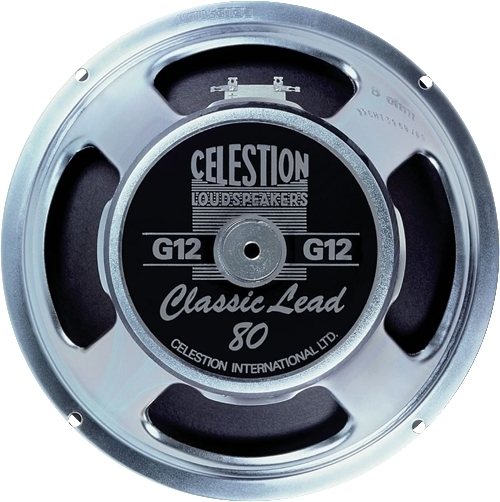
Celestion Classic Lead 80
In the 2×12 combos with mixed speaker configuration, it turned out that the Vintage 30 unfortunately does not match the basic sound of the amp aswell as the the G12 Heritage. Replacing it with a Celestion Classic Lead 80 takes the edge off the amp and also fattens it up nicely!
Our tip for mixed loading.
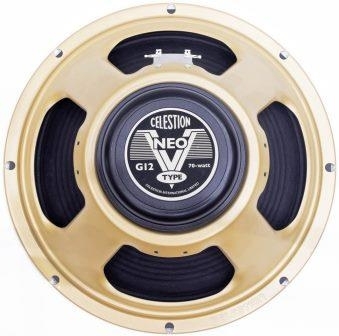
Celestion G12 NEO V-Type
bs
It delivers the familiar and addictive modern vintage sound of the V-Type, while weighing only 1.9kg!
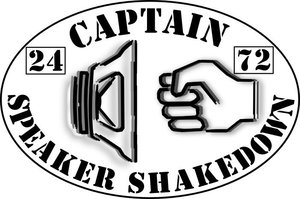
Captain Speaker Shakedown
speaker shakedowns reduce scratchy highs and makes the bass rounder.
JVM Trivia
Things to know and also things not to know from everyday workshop life
Subtle failure phenomenon
Occasionally a JVM comes to us that just doesn’t sound as full and dynamic as it once did.
In this case our first test is the resonance regulator. If the sound doesn’t seem to change anymore then a resistor in this subcircuit of the amp is defective. The effect is not very big anyway, so you have to listen carefully to hear if anything changes.
The resistor responsible for this is not particularly stressed, but due to its somewhat unusual value, it is probably supplied by a different company as the other resistors. And there are apparently problems from time to time. So: If you have the same problem, just turn the resonance control. And if nothing changes: Come to us!
Difference in top & combo amps
A JVM combo chassis is actually just an upside down top chassis, which is why the input jack is also on the right for a top and on the left for a combo. The golden metal front with lettering is also different of course, otherwise the text would be upside down and so that the scaling also fits the line on the potentiometer, there are different potentiometer knobs.
Construcion changes over the years.
The JVM series has been manufactured since 2007 and since then we noticed a few things that have been changed over the years.
One thing in advance: The circuit itself has never been changed, at least not clearly. All amplifiers should therefore sound the same, apart from the tube configurations & mods of course.
Here is an overview of the changes we have noticed in the JVMs (changes are still in progress, eventually also as graphics, but until then as text.) Applies to the 410H model.
tubes
Starting around 2018, JJ EL34s will be installed at the factory to replacing SVT tubes. Presumably in the same move, additional green leads are installed between the anode pairs, supposedly to improve stability.t. Preamp tube placement remains roughly the same.
Potentiometer
At the beginning of the production all JVM had a front board with “plugged” potentiometers, the potentiometer axis runs throught a hole in the front. The preamp board is inserted from behind and held by clamping bolts. Unfortunately, the board can come loose from the bolts when mechanically impacted from the front, then the potentiometer knobs often drag or the switches are too low. Marshall found this out relatively quickly and introduced an improvement to the market in 2010: The potentiometers are now screwed to the front and the board is held by the potentiometers. It’s more work, but it lasts longer and, moreover, the potentiometer knobs no longer wobble. Unfortunately, the first version can not be converted, because the holes in the front can not be reshaped. Some combos and 205 models still have plugged-in potentiometers. And one more little thing: The potentiometer knobs differ between the top and the combo, the position of the black indicator line is different.
back panel
The back panel & fastening has undergone some changes.
At the beginning, the back panel was held in place with 4 burnished sheet metal/wood screws. Since the wood screws tend to chip the wood, four machine screws with metal inserts are used from about 2010. Circa 2020 an additional fifth screw has been added to the top center of the back panel, this time again a wood screw is used.
The perforated plate itself has 4 round mounting holes at first, from about 2010 two additional, so six, of which only 4 are used (presumably the back panel fits so also other amps). Sometime after that the holes became elongated holes and the sheet metal also gets a bend at the bottom, presumably for stability. Last change came about 2020, from then on there are only 4 slotted holes and the hole for the additional screw on top.
Chassis
In mid-2021, there was a major change to the chassis, i.e. the sheet metal box in which the electronics are installed. A new material has been introduced, or maybe just the coating process, the new chassis looks shinier and also the amplifiers are now 400g lighter. We cannot say whether this is only due to the chassis.
In addition the mounting screws of the transformers have changed in the same period, slotted screws are now replaced by pozidriv screws.
Emulated Line out jack
There was a change here as well, we believe it was around 2014. The first version of the jack was soldered directly to the board and unfortunately had no locking function for the XLR connectors. This was probably unpleasantly noticed, so Marshall improved and installed a jack with a locking function. Since this version is probably not available for PCB mounting, the socket has been turned 90° and connected with short cables. You can also see this 90° rotation very well from the outside.
user reviews
Hallo zusammen,
vor bald 3 Jahren , also noch „vor Corona“ habt Ihr meinem damaligen als Fehlkauf ein trauriges Reservistendasein fristenden Marshall 205 wiederbelebt. Mangels Auftrittsmöglichkeiten hatte ich keine Möglichkeit das Teil mal live zu testen. Das habe ich jetzt nachgeholt und hatte den besten live Sound ever. Einen dermassen fetten und doch durchsetzungsfähigen Sound hatte ich noch nie. Auf diesem Wege: unendlichen Dank dafür! Ihr habt aus dem nicht nutzbaren Gain Monster einen megageiles Soundmonster gemacht. Der Neid der Berliner Gitarrenkollegen ist mir sicher 🙂
Anbei ein paar Impressionen:
Ulrich
Hallo zusammen,
ich hatte vor ein paar Wochen meinen JVM 410 H zu euch geschickt, mit der Bitte, das Teil mit der “Vollen Hütte” modifizieren zu lassen. Ich bin von dem Ergebnis echt begeistert und fasziniert! Ihr habt ganze Arbeit geleistet!
Endlich klingt der Amp nicht mehr so scharf und harsch im clean Modus.
Die Abstimmung der vier Kanäle und der drei Modi pro Kanal (grün, orange, rot), ist jetzt optimal aufeinander abgestimmt. Auch die beiden Overdrive Kanäle OD1 und OD2 sind jetzt für Classic-Rock hervorragend einsetzbar.
Vor allem der OD 2 war ja kaum spielbar und viel zu extrem in der Verzerrung. Auch die Lautstärkereglung ist um ein vielfaches einfacher und
verträglicher geworden.
Mein Fazit:
Es war eine hervorragende Investition, in einen, an sich schon sehr guten Marschall-Verstärker.
Ich kann diese Modifikation nur empfehlen!
Vielen Dank auch für eure Beratung und den problemlosen und schnellen Versand.
Herzliche Grüße
Hans-Peter
2022
Hallo Anselm,
Hallo Captain Team,
Ich wollte schon immer einen Amp mit dem ich jede meiner Vorlieben abdecken kann. Leider war „Der Eine der alles kann“ nie dabei. Der JVM 410 machte da als Basis schon Sinn, da man ja 4 Amps in einem hat. Das Kassengestell hat mich rein vom Sound her nicht 100% überzeugt… also was kann man machen? Modden!
Kurz und knapp: ich würde wirklich jeder Person, die diesen Amp besitzt und sich immer noch fragt „Kann das alles sein“, diese Modifikationen empfehlen.
Der Amp kann danach eigentlich alles abdecken was man so braucht. Der gesamte Sound verliert seine unangenehmen Höhen, es wird alles definierter und dem ganzen Teil etwas Gain zu entziehen ist wahrscheinlich die Beste Kur die man dem Ding verschreiben kann. Was man mit dem NFB und Bite Regler schon allein machen kann ist der Wahnsinn. Ich kann nicht sagen welcher der Mods nun sinnvoll ist oder welchen man sich sparen könnte. Das Gesamtpaket hat mir das gegeben was ich brauchte. Ich weiß das klingt wie bezahlte Werbung und Voodoo… aber ich habe zum ersten Mal das Gefühl keinen Amp von der Stange zu spielen. Wirklich ohne Mist. Ich vermisse nichts mehr und sage danke an Anselm für die tolle Beratung und die vielen Mails und natürlich auch nochmal ans ganze Team.
Greets kev
Kevin 2022
Nachdem ich jetzt alle Modes mit der Volle-Hütte-Mod ausgiebig getestet habe, hier meine Eindrücke über die einzelnen Modding-Module.
- Voicing der Kanäle: etwas schwer vergleichbar, da nicht auf Stock umschaltbar. Primär vermutlich Pegelanpassungen der Modes untereinander jedes Kanals sowie Voicing-Feinabstimmungen.
Die Soundänderungen sind insgesamt eher subtil als unmittelbar ins Auge springend. - Vintage-Style-Mod: Ebenfalls schwer vergleichbar, da nicht auf Stock umschaltbar. Die Soundänderungen sind ebenfalls eher subtil.
- Clean/Crunch-Green-Boost (schaltbar): Das ist absolut eine tolle Sache für alle, die (vor allem im Clean-Green Mode) mit Gain-Einstellungen bis ca. 12 Uhr arbeiten.
Damit wird in diesen beiden Modes das Signal (Gain) deutlich angehoben, sodaß der Clean-Green nicht mehr so leise ist (verglichen mit den anderen beiden Modes des Clean-Kanals).
Für manchen vielleicht ein netter Nebeneffekt: Auch der Crunch-Green wird hier geboostet, sodaß der nach einem kräftig angeblasenen Vox klingt. - Anti-Gain-Mod (schaltbar): Unverzichtbar! Früher benutzte ich den OD1-Orange-Mode mit Gain auf 9 Uhr, damit er nicht so extrem komprimierte und die Ansprache zumindest teilweise als direkt zu bezeichnen war.
Mit eingeschalteter AGM kann ich jetzt diesen Mode bei Gain auf ca. 14 Uhr nutzen, um die gleiche Verzerrung wie vorher zu bekommen. Allerdings mit etwas weniger Kompression und wirklich direkter/dynamischer sowie aufgeräumteren Mitten.
Außerdem kann man jetzt endlich auch die roten Modes der OD-Kanäle tatsächlich nutzen und sie klingen richtig geil. Hier hat man dann natürlich wieder mehr Kompression, was aber für HighGain-Lead oder HighGain-Riffing à la Whitesnake (Album: Slip of the tongue) oder die ersten VanHalen-Alben durchaus echt Spaß macht.
Sehr angenehmer Nebeneffekt: Der für mich vorher nicht relevante/nutzbare Clean-Red Mode (wegen Gain auf 3 Uhr) wird endlich im Gain drastisch reduziert, sodaß auch dieser Mode jetzt nutzbar ist.
Er hat jetzt nur noch etwas mehr Gain als Clean-Orange, hat aber dafür ein ganz anderes Voicing und wird dadurch echt interessant.
Fazit: Die AGM hab ich zugegebenermaßen jetzt dauerhaft auf LOW (minimales Gain) eingestellt ! - Bite-Regler (regelbar): Geile Sache ! Mit diesem Regler kann man stufenlos der doch eher leblosen Gain-Struktur mehr Biss (oder Pfeffer) einhauchen. Nachwürzen nach Belieben!
Besonders eindrucksvoll im Crunch-Kanal aber auch in den OD-Kanälen noch spürbar wirksam. Steht jetzt bei mir immer so auf 11 Uhr. - Negative-Feedback-Mod (regelbar): Geile Sache! Hiermit läßt sich die Gegenkopplung der Endstufe stufenlos zwischen 60’s Plexi (sehr straff) über die JVM-Stock-Einstellung über Eddies-Plexi bis hin zu „Quasi nicht mehr vorhanden“ (à la VOX) einstellen. Die Endstufe und der gesamte Ton wird dadurch ungebremster, offener, explosiver und dynamischer (vor allem im Mitten- und Bassbereich). Steht bei mir jetzt immer auf 10:30 Uhr (Eddie’s Plexi).
- Choke-Mod: Ganz wichtig! Der Widerstand im Netzteil wird hier (wie es sich für einen Marshall gehört) durch eine ordentliche Drossel (Mercury Magnetics) ersetzt.
Soundtechnische Wirkung: Der gesamte Amp bekommt mehr Signaltiefe und ein schnelleres und wuchtigeres Ansprechen (ich nenne es mal „Durchschlagskraft“). Diese Mod ist absolut unerläßlich!
Fazit: Alles in allem ein gelungenes Modding-Paket, das jedem JVM gut „steht“. Ich würde die Volle-Hütte-Mod jedem JVM-User uneingeschränkt empfehlen!
Mit diesen Modifikationen holt man bedeutend mehr aus dem Amp heraus. Diverse Modes werden dadurch überhaupt erst sinnvoll nutzbar und die bereits vorher nutzbaren Modes legen mächtig an Substanz zu.
Nebenbei für technikinteressierte: Alle (für die Mods) zusätzlichen Signalleitungen im Innern sind mit ordentlichen abgeschirmten Kabeln ausgeführt.
Hans (2018)
Captain’s „Marshall JVM410h-Mod“ ist eine hervorragende Amp-Modifikation, welche es mir ermöglicht einen fetteren und pulsierenden Sound im Studio zu fahren. Die Modifikationen verleihen meinem Klang zudem mehr Aggressivität. Die Einzelheiten für das Tuning wurden in der Lounge geklärt. Der Verstärker befindet sich nun vollständig modifiziert in meiner Vitrine. Das Team ging dabei auf meine speziellen Vorstellungen ein.
SG
SirGibson – 2019 – www.sirgibson.com
Hallo Captain und Team,
Nach den ersten Test auch mit Band stellt mich der Umbau von meinem Marshall 410h vor Probleme!
Ja ich kann mich einfach nicht entscheiden welchen der Sounds ich auswählen soll, die sind jetzt alle geil!
Ich kann nur sagen, das ist es was ich gesucht habe.
Super Arbeit nochmals Danke und Grüße aus Kriftel
Micha
Nachdem ich nun einige Wochen mit dem modifizierten Amp verbracht habe, einige Proben und Auftritte damit gespielt habe, versuche ich im Folgenden die von mir empfundenen Änderungen zu beschreiben.
Direkt beim ersten Test fiel mir das Zusammenspiel der Klangregelung (Mitten, Höhen) und dem Negative Feedback mod auf. Allein aus den Möglichkeiten der für mich neu oder anderes gestalteten Klangregelung ergeben sich sehr vielfältige Möglichkeiten, die den Amp sehr unterschiedlich klingen lassen können. Zusätzlich hat der Amp reichlich Schub unten herum, genau so wie sich das Gitarristen wünschen… ?
Zunächst gab es bei mir Zweifel, ob durch den Anti Gain mod etwas verloren gehen könnte oder der Gainlevel nicht mehr ausreicht. Das ist definitiv nicht so! Es ist auch in der 25% Schaltung mehr als genug Gain vorhanden. Zumal sich durch die Reduktion viel besser als früher die gelben bzw. roten Modi nutzen lassen. Ein netter Nebeneffekt ist die Luftigkeit des Amps, die durch die geringere Kompression entsteht. Die Abstimmung zwischen den einzelnen Gainstages (grün, gelb, rot) innerhalb eines Kanals passt toll zusammen und es finden sich für alle Situationen passende Einstellungen. Ich verwende ALLE Kanäle und Gainstufen, da jede Einstellung für mich sinnvoll einzusetzen ist.
Was mir zusätzlich auffällt ist, dass Pedale (gerade Zerren) viel besser mit dem Amp harmonieren und der Charakter des Pedals besser hervorgehoben wird. Ein Ibanez TS 808 klingt völlig anders als ein Centaur Clone (was sicherlich keine neue Erkenntnis ist …), aber ohne die Amp Modifikationen war der Klangunterschied definitiv nicht so ausgeprägt und feinfühlig.
Durch den Mastermod lässt sich der Amp mit Druck auch bei moderaten Lautstärken spielen. Meine Powersoak hat tatsächlich ausgedient!
Fazit:
Alle Kanäle machen uneingeschränkt Spaß und haben etwas Besonderes.
Ich habe zum ersten Mal in meinem Leben das Gefühl mich mit Gitarre, Kabel und Amp auf eine Bühne stellen zu können, ohne etwas zu vermissen.
Klasse Arbeit, vielen Dank dafür!
Ralf – 2020
Hi Captain und Team,
der Amp ist heute wohlbehalten bei mir angekommen. Ich hab ihn vorhin gründlich getestet. Da habt Ihr echt einen geilen Job gemacht!!! Er klingt super!!!
Er ist durch die neuen Regler noch flexibler und durch die Anpassung der Lautstärkeunterschiede viel ausgewogener.
Jetzt ist der Amp eine Einheit und keine Ansammlung von verschiedenen Sounds mehr!
Vielen Dank an Dich und Dein Team für die erstklassige Arbeit!
Liebe Grüße
Robin
Servus Captain und HaenC,
ich wollte noch mal kurz Rückmeldung über die Modifikation des Amps geben, den ich jetzt ausgiebig getestet habe: Nach dem kleinen Intermezzo von DHL ist der Amp dann doch noch wohlbehalten bei mir aufgetaucht. Na ja, DHL ist schon manchmal seltsam…….
Die Modifikationen haben sich aus meiner Sicht richtig gelohnt, da der Amp nun deutlich mehr Tiefe und kaum noch wahrnehmbare kratzige Höhen hat. Die Kanäle sind sehr gut aufeinander abgestimmt und der Lautstärkesprung von Clean auf Crunch ist deutlich reduziert. Besonders im OD-Kanal sind Gain-Einstellungen auch über 12 Uhr nutzbar ohne dass störende Geräusche oder massive Rückkopplungen auftreten.
Allerdings gefällt mir der Clean/Crunch Kanal am besten. Der Orange und Red Mode liefern hier wirklich klasse sehr ausgewogene Sounds, die fast exakt meinen Vorstellungen entsprechen.
Mit einer Paula oder Strat klingt das verdammt gut! Der Clean Kanal könnte allerdings noch einen Schnaps mehr an Punch gebrauchen, wobei der wirklich sehr schön und klasse klingt.
Super ist auch die NFB- und Bite-Regelung, so dass hier jeder seinen Sound individuell einstellen kann.
Alles im allen eine wirklich sehr gute und professionelle Arbeit, die Ihr da abgeliefert hat. Allerdings würde mich wirklich mal interessieren was ihr denn alles so geändert habt.
Ich habe da mal in den Amp reingeschaut und konnte außer den Kabeln für die zusätzliche Regelung (NFB und Bite) nichts Außergewöhnliches entdecken. Hier an der Stelle ein großes Dankeschön an HaenC, der sich mit einer schönen Widmung im Inneren des Amps verewigt hat- eine echt coole Geschichte!
So, das war’s! Noch mal vielen Dank für die Modifikation, die meine Erwartung wirklich übertroffen hat!
Wenn ich demnächst mal im Süden bin, werde ich bei Euch mal reinschauen. Falls Eure Gitarren genauso gut sind wie die Amp Mods, dann gibt es keinen Grund lange zu warten……
Viele Grüße Ralf
Hi,
ich habe heute meinen von Euch getunten JVM getestet. Super tolles Ergebnis, das hat sich definitiv gelohnt!!! Es ist mir ein Rätsel warum Marshall da dermaßen viel Gain reinbaut, weniger ist mehr! Ihr gebt das wirklich toll gemacht. Man hört und spürt den „qualitativen Mehrwert“ des Amps. Ihr habt wirklich nicht zu viel versprochen. DANKE !!!
Viele Grüße
Ronny
FAQ
How do I order?
Since the modifications can be very individual, just write us a message or call the workshop.
Then we will clarify all open questions and guide you through the modification procedure.
If you already know exactly what you want, it is enough to send the amplifier well packed to us and fill in and enclose a delivery note.
Of course, you can also drop it off in person at the lounge.
How long does it take?
Depending on the scope of modification and current workload, about one to four weeks.
We will be happy to provide a more accurate time estimate over the phone or via email.
What about the warranty/guarantee?
If the amplifier is still under manufacturer’s warranty (usually 2 years), it will expire as soon as we perform any modification.
The statutory warranty of one year applies to our services.
But even after that, we are there to help and advise if there is a problem.
I need something special
We have been repairing and modifying amplifiers since 2010 and have plenty of experience.
Almost every amplifier has been on our workbench and hundreds of modifications have been made.
Tell us your wishes by email or on the phone and we will find a solution for you.


